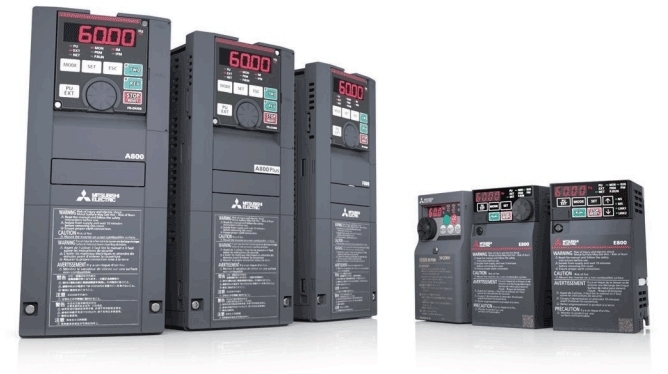We’ve been finding more and more circumstances where customers find it beneficial to run their variable frequency drives (VFD) to failure, potentially damaging the VFD beyond repair. This is an interesting concept for people to wrap their mind around at first.
“Why would I want my VFD to run until it fails? Why wouldn’t I want to be alerted by some type of alarm before the VFD fails?”
These sound like perfectly reasonable questions. Conventional thinking would lead one to believe that they would always need to know when a VFD has the potential of failure so that a planned repair or replacement can be sufficiently scheduled or so the operator can run it at suboptimal speed so as not to exacerbate the problem. However, this is not always the case. In fact, there are both economic and safety reasons why it may be more advantageous to “ignore” any kind of alert from the VFD and just allow it to run until it completely fails.
Mitsubishi Electric Variable Frequency Drives
The first reason why we’re seeing more customers utilize this approach is from a financial perspective. Depending on the application, an unscheduled shutdown of the operation to repair or replace a VFD that is demonstrating problems can be quite costly. The amount of lost production time attributed to the shutdown could be a burden that isn’t easily overcome. However, it all depends on the circumstance. For example, if a long and costly manufacturing process is running smoothly and near the very end of the run, the VFD begins to alert, shutting down the operation or limiting the operation to suboptimal conditions for the remainder of the process. Often in these situations, the operator would have been better off just allowing the process to run at the appropriate speed as opposed to something suboptimal because of the alert. The errors that were causing the problem can then be reviewed after the operation is complete.
There is also a safety benefit for having the “run to failure” option on a VFD. There is a chance that the VFD is associated with a piece of equipment that is critical to the safety of the process, a simple example could be a fan that is responsible for removal of toxic gases. This is certainly more prevalent in some industries as opposed to others, but VFDs can play a critical role in the safety of a process. If an alert causes it to adjust its effectiveness, this can have a detrimental effect on the health of personnel in the area.
I discussed this topic more in depth earlier this year in an article I penned for Processing magazine:
VFDs: Running to Failure. Give it a read if you missed it.
If you want to learn more about running a VFD until failure and how it may benefit you, give us a call at
(855) 737-4716 or fill out our
online form and one of our technical specialists will get back to you.
